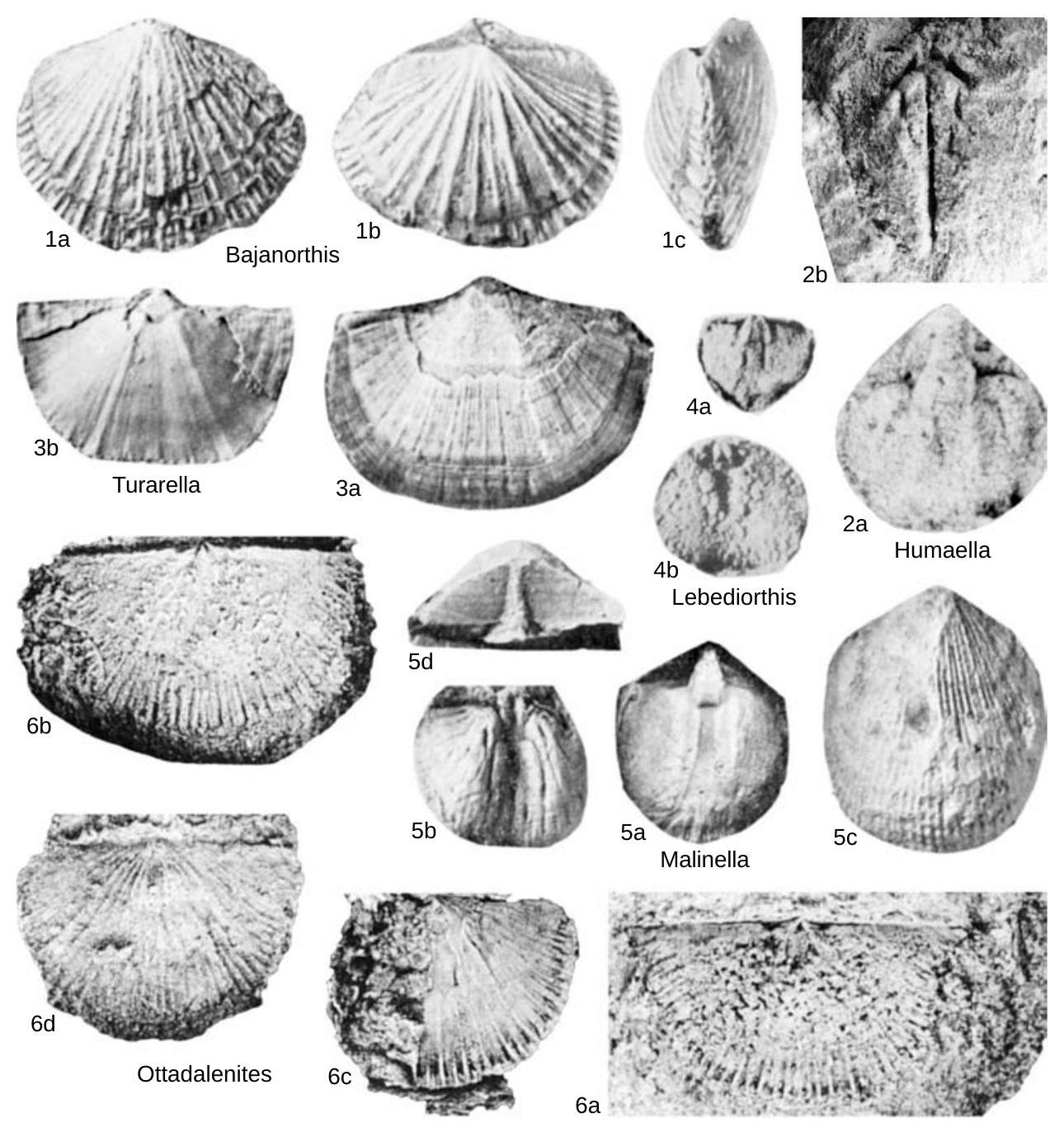Welcome to the Treatise on Invertebrate Paleontology!
Please enter a genera name to retrieve more information.

Humaella
Classification
Phylum:
Brachiopoda
Subphylum:
Rhynchonelliformea
Class:
Rhynchonellata
Order:
Orthida
Suborder:
Orthida - Suborder uncertain
Formal Genus Name and Reference:
Humaella ZHU, 1982, p. 53
Type Species:
H. huangbanjiensis, OD
Images
(Click to enlarge in a new window)
Fig. 616, 2a, b. *H. huangbanjiensis, Tremadoc, Da Hingang Ling, a, internal mold of ventral valve, X4, b, internal mold of dorsal valve, X4 (Zhu, 1982).
Synonyms
Geographic Distribution
China (Da Hingan Ling)
Age Range
Beginning Stage in Treatise Usage:
Lower Ordovician
Beginning International Stage:
Tremadocian
Fraction Up In Beginning Stage:
0
Beginning Date:
486.85
Ending Stage in Treatise Usage:
Lower Ordovician
Ending International Stage:
Floian
Fraction Up In Ending Stage:
100
Ending Date:
471.26
Description
Small, subcircular with acute cardinal extremities, biconvex, unisulcate, multicostellate, apsacline ventral and anacline dorsal interareas moderately long, teeth undescribed, dental plates recessive, ventral muscle scar short, subovoid with pedicle callist, cardinal process wide, undifferentiated, brachiophores divergent, dorsal median septum long, high, posterior pair of quadripartite dorsal adductor scars larger than anterior pair. [The description of this genus is too generalized to permit a more precise identification of the specimens than orthoid. The mold of an apparently high dorsal septum, however, suggests some affinity with such stocks as the cremnorthids, although Humaella is older than other genera assigned to the family. The genus is also listed by L. R. M. COCKS and RONG Jia-yu, herein, as a junior synonym of ? Akelina SEVERGINA, 1967. This ambiguity should be resolved when the shell structure of one or preferably both genera is known.]
References
Museum or Author Information
Classification
Phylum:
Brachiopoda
Subphylum:
Rhynchonelliformea
Class:
Rhynchonellata
Order:
Orthida
Suborder:
Orthida - Suborder uncertain
Formal Genus Name and Reference:
Humaella ZHU, 1982, p. 53
Type Species:
H. huangbanjiensis, OD
Images
(Click to enlarge in a new window)
Fig. 616, 2a, b. *H. huangbanjiensis, Tremadoc, Da Hingang Ling, a, internal mold of ventral valve, X4, b, internal mold of dorsal valve, X4 (Zhu, 1982).
Synonyms
Geographic Distribution
China (Da Hingan Ling)
Age Range
Beginning Stage in Treatise Usage:
Lower Ordovician
Beginning International Stage:
Tremadocian
Fraction Up In Beginning Stage:
0
Beginning Date:
486.85
Ending Stage in Treatise Usage:
Lower Ordovician
Ending International Stage:
Floian
Fraction Up In Ending Stage:
100
Ending Date:
471.26
Description
Small, subcircular with acute cardinal extremities, biconvex, unisulcate, multicostellate, apsacline ventral and anacline dorsal interareas moderately long, teeth undescribed, dental plates recessive, ventral muscle scar short, subovoid with pedicle callist, cardinal process wide, undifferentiated, brachiophores divergent, dorsal median septum long, high, posterior pair of quadripartite dorsal adductor scars larger than anterior pair. [The description of this genus is too generalized to permit a more precise identification of the specimens than orthoid. The mold of an apparently high dorsal septum, however, suggests some affinity with such stocks as the cremnorthids, although Humaella is older than other genera assigned to the family. The genus is also listed by L. R. M. COCKS and RONG Jia-yu, herein, as a junior synonym of ? Akelina SEVERGINA, 1967. This ambiguity should be resolved when the shell structure of one or preferably both genera is known.]
